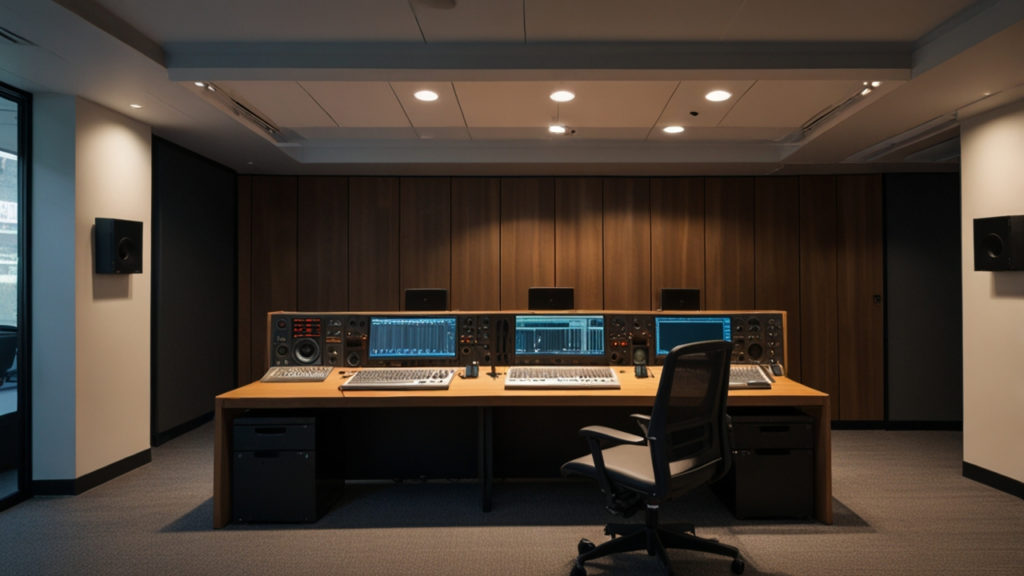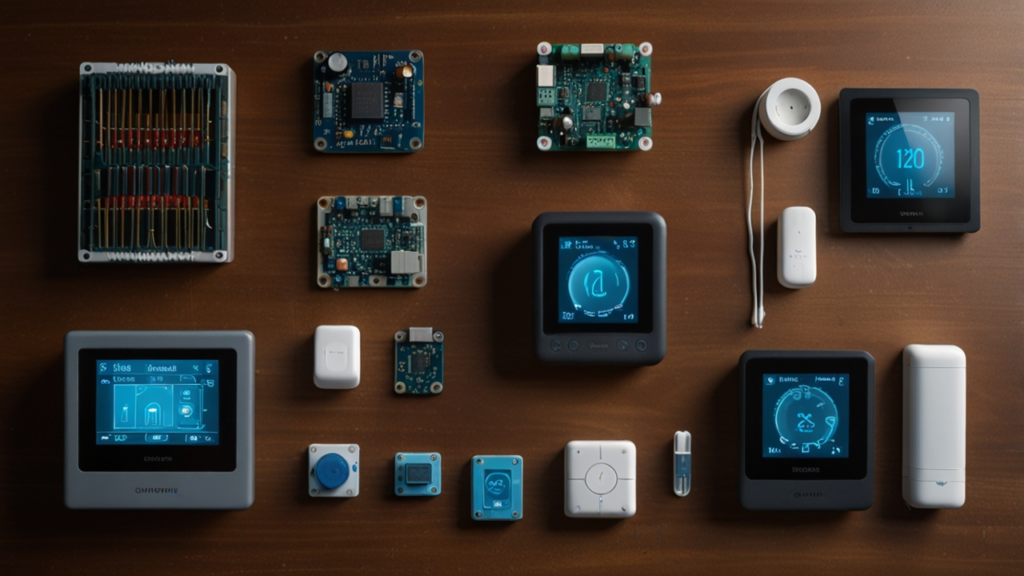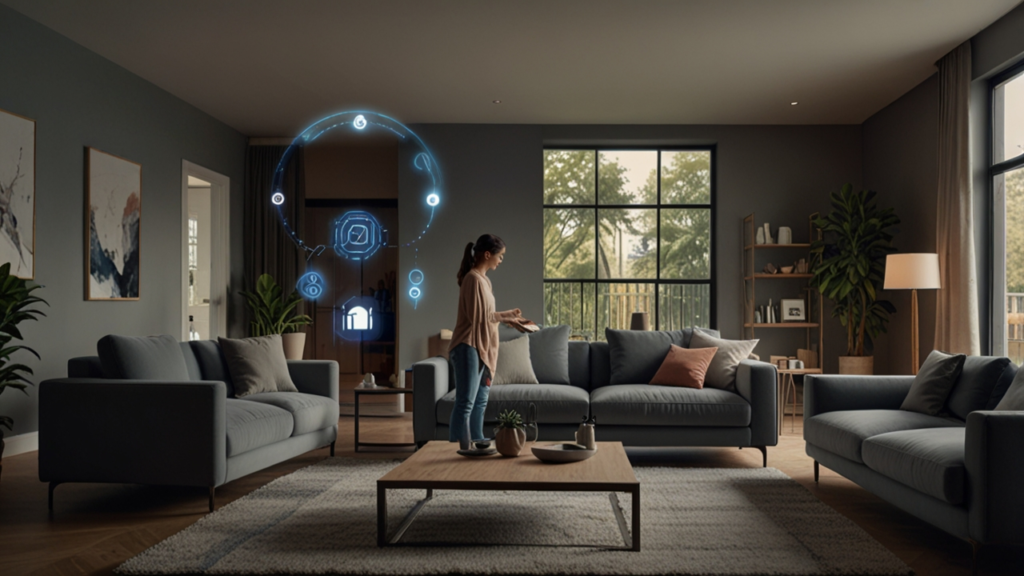What is Surround Sound? 8 Key Technologies
This article offers an in‐depth exploration of a revolutionary audio technology that has transformed how we experience movies, games, and music. We will walk you through its definition, historical evolution, technological methods, and future possibilities.
Our discussion is designed to be both informative and engaging for readers of all backgrounds. Whether you are a tech enthusiast or simply curious about modern entertainment, you will find valuable insights throughout this piece.
Prepare to dive into the journey from early experimental setups to the sophisticated systems integrated into today’s home theaters and gaming consoles. Your thoughts and questions are highly encouraged as you read along.
Table of Contents
Introduction to Surround sound
Definition and Basics
This section introduces you to the foundational concepts behind the technology that envelops your listening environment. The technique uses multiple audio channels to create an auditory experience that seems to come from all around you. It is characterized by the use of speakers placed in strategic positions relative to the listener, ensuring that sound arrives from different directions. In today’s multimedia era, this feature is integral to home theaters and even personal devices.
When you watch your favorite movie or play a video game equipped with this technology, the effect is to transport you into the scene rather than just letting you view it. Its defining aspects concentrate on the placement of sound objects, operability in various settings, and compatibility with advanced receiver technologies. Are you ready to experience audio like never before?
Importance in Modern Media
With the rapid evolution of home entertainment, the ability to reproduce live, dynamic audio has become crucial. This breakthrough has redefined what it means to experience movies, games, and music by adding layers of realism that were once unimaginable. The clarity and depth enhance every note, whisper, and explosion, ensuring that the viewer is truly immersed in the on-screen narrative.
In modern media environments, this technology is prized for its ability to make content more engaging and emotionally impactful. Today’s systems are compatible with state-of-the-art receivers and streaming platforms, offering users greater flexibility and precision in sound reproduction. Have you ever experienced a setup that pulls you into a film’s action right from your living room?
For more information on the basics of this innovation, check out the insights shared by Cutting-Edge Technologies.
Evolution and History of Surround sound
Early Developments and Innovations
The journey of this audio phenomenon dates back nearly a century. In the early days, pioneering experiments—such as the groundbreaking 1940 production that utilized a multi-channel system with dozens of speakers—paved the way for future innovations. Early trials involved complex setups with channels arranged to mimic sound coming from various spatial points.
During the 1930s to 1950s, creative minds in cinema and music carefully crafted early systems, despite the high costs and technological limitations. Classical composers even experimented with unconventional speaker placements, hinting at a future where sound would become an immersive element of media. These historical milestones laid the groundwork for the evolution we witness today. Do you think the challenges faced by early innovators would still inspire a similar breakthrough in today’s high-tech world?
To learn more about this historical evolution, refer to a detailed study on early experiments.
Transition to Digital Era
As technology advanced, the audio technique transitioned from analog to digital. This shift opened up new possibilities for clearer sound reproduction and more efficient channel encoding methods. The introduction of digital receivers and object-based formats allowed for precise sound placement, making it easier to create three-dimensional auditory experiences.
During the late 1980s and 1990s, popular systems emerged that improved both accuracy and accessibility. The advent of multi-channel setups such as the five-channel configuration boosted mainstream adoption in cinemas and home theaters. This digital leap also led to enhanced matrix encoding techniques that extracted directional sound cues from basic audio tracks. How do you believe the shift from analog to digital has influenced your personal media consumption?
An insightful examination of this transition can be found in an article on home theater sound history.
For additional insights on the shift in technology, you might also visit Wikipedia’s overview.
How Spatial Audio Enhances Surround sound
Role of Object-based Audio
The incorporation of object-based techniques in this audio approach has significantly refined sound reproduction. Instead of enforcing fixed channels, engineers can now isolate individual audio objects and assign them precise spatial coordinates. This method results in sound that not only feels real but also fluidly adapts to different listening environments.
By positioning each audio object in a three-dimensional space, creators can simulate the sensation of sound moving overhead, behind, or even from adjacent areas. This methodology is a core element of modern setups and has enhanced the depth and realism of the auditory experience. It relies on advanced processing power that continuously tailors the playback dynamics according to the listener’s position and room acoustics. What innovations do you think will emerge as researchers refine object-based techniques further?
For more technical discussions on these processing techniques, consider reviewing content available from iZotope’s learn section.
Also, check out insights on future applications on Future Technologies.
Integration in Consumer Devices
Modern consumer devices have embraced this technology through smart integration into everyday gadgets. Built into smartphones, tablets, and even gaming consoles, this technology has become accessible to millions of users worldwide. Its advanced integration ensures that high-quality auditory experiences are available outside of traditional home systems.
The miniaturization of speakers and the development of sophisticated software allow these devices to process complex sound fields. This integration makes it possible for you to enjoy a cinema-like audio experience even on the go. Enhanced compatibility with streaming services and gaming platforms has further cemented its role in modern entertainment. How has your experience with mobile or console audio enhanced your daily media consumption?
Discover more about the evolution in consumer applications by visiting Future Technologies for additional context.
Immersive Sound Systems and Their Applications
Cinema and Home Theaters
This technology has revolutionized the cinematic experience by delivering sound that matches the visual storytelling of films. In a movie theater or a sophisticated home theater system, the precise placement of sound makes the action more realistic and emotionally engaging. The systems equipped with numerous speakers positioned around the audience enable small details to be rendered in a lifelike manner.
Digital formats have allowed for the integration of this technology into movies that aim for hyper-realistic audio effects. Filmmakers now tailor every sound element—from subtle background noises to major musical scores—to maximize the audience’s involvement in the narrative. These advancements have contributed significantly to the industry’s evolution. Have you ever felt as though you were part of a movie scene because of the audio quality?
For further details, explore the advancements detailed on Crutchfield’s home theater history page.
Additionally, learn more about immersive audio approaches through platforms like Tech Innovations.
Gaming and Virtual Reality
Another exciting application lies in the gaming and virtual reality domains. The enhanced auditory experience plays a vital role in immersive gameplay. It allows gamers to detect subtle in-game cues and enhances their overall performance by providing realistic soundscapes that mimic real-world environments.
Developers create virtual sound fields that dynamically shift as you move, substantially increasing the challenge and enjoyment of interactive experiences. This technology has proven essential in cultivating a sense of presence and emotional engagement in gameplay. Its role in VR is particularly critical, as realistic audio cues can significantly improve navigation and situational awareness. What do you think is the next breakthrough in enhancing realism in interactive entertainment?
For further reading on VR audio, you may visit reputable industry reviews and articles to gain additional insights.
If you are interested in cutting-edge developments, visit Tech Innovations for more details.
Real-World Case Studies of Surround sound
Success Stories in Cinema and Music
A number of groundbreaking films have showcased the capabilities of this technology. A notable production, released in 2013, impressed critics and audiences alike with its exceptional sound design, earning prestigious awards for its technical innovation. Likewise, leading cinema chains in Asia integrated advanced sound systems that paired dynamic audio with multi-screen visuals, drawing millions of viewers.
Not only has the film industry benefited, but the music sector has also seen significant advancements. High-profile artists began releasing tracks that utilized these sophisticated sound techniques. One example recorded a marked increase in compatible device sales in a specific region, proving that innovative sound delivery can dramatically influence consumer behavior. Have you experienced the thrill of watching a film with such exceptional audio quality?
Find more on these intriguing case studies by reading about the evolution of cinema sound on Home Theater Forum.
Also, check out the latest trends on Tech Developments for more inspiring examples.
Practical Deployments in Modern Setups
Beyond large-scale cinema experiences, smaller installations have also effectively implemented this technology in everyday contexts. Many modern households have incorporated dedicated systems into their home environments. In gaming setups, manufacturers now produce advanced receivers that enhance sound precision, creating a full-spectrum auditory display that complements on-screen action.
This widespread adoption is not limited to the entertainment industry; educational institutes and corporate setups also benefit from clearer, more precise sound distribution. Innovations continue to lead to reduced costs and increased performance reliability. Real-life deployments have demonstrated quantifiable improvements in user satisfaction, with various studies noting a significant uptick in overall attendance at events featuring this technology. How do you think such improvements influence your personal viewing or listening experience?
A comparative overview of different implementations is presented in the table below.
Comprehensive Comparison of Case Studies
| Example | Innovation | Application Impact | Region |
|---|---|---|---|
| Film Award Winner | Advanced Audio Design | Enhanced cinematic experience | Global |
| Leading Cinema Chain | Multi-display Integration | Increased ticket sales | Asia |
| Music Platform | Dynamic Track Mixing | Boosted engagement | North America |
| Home Theater System | 5.1 Setup | Enhanced home viewing | Europe |
| Gaming Console | Interactive Audio | Improved gameplay immersion | Global |
For further commentary on this evolution, visit Smart Tech to stay informed.
Multi-channel Audio in Modern Surround sound Solutions
Technological Methodologies
The core of today’s sophisticated setups relies on a combination of advanced digital processing and precise speaker placement. The original matrix encoding methods have evolved into complex algorithms used to manage a variety of audio channels. This enables refined calibration based on the listener’s unique environment.
Innovative approaches allow for compatibility with multi-channel systems like five and seven-speaker configurations. These methodologies ensure that audio signals are accurately reproduced without distortion. Enhanced computing power has made it possible to execute complex tasks in real time, ensuring that every word and sound is delivered with clarity.
Developers continuously explore methods to optimize sound reproduction by taking into account factors such as room geometry and listener position. The impact of these enhancements is evident in the dramatic improvements reported in both diagnostic tests and consumer reviews. What new method do you think will next change the way sound is distributed in our living spaces?
Regional Popularity and Industry Impact
Implementation of these systems varies across regions, with differing levels of adoption and industry influence. In North America, widespread use in high-end home theaters has led to a strong market presence. Similar advances have been noted in Europe, where cultural emphasis on cinema quality has spurred installation projects in both commercial and private sectors.
In regions like Asia and Australia, adoption is rapidly increasing as consumers welcome modern, dynamic audio environments. This proliferation is supported by industry data that indicates a significant year-over-year growth rate, as well as consumer surveys that report high satisfaction with performance. Have you noticed regional trends in how audio technologies are being embraced in your area?
Numerous research reports confirm that these implementations are a driving force behind overall market growth, paving the way for future technical breakthroughs.
Future Trends: 3D Sound and Beyond
Emerging Innovations and AI Integration
Looking ahead, the future promises a host of new enhancements that are set to redefine the audio industry. One key area of focus is the integration of artificial intelligence with current methodologies to create adaptive sound experiences. This includes the development of systems that can autonomously adjust audio settings based on real-time analysis of the environment.
Early indications suggest that AI-driven processing may soon allow for personalized audio experiences that adjust dynamically in both gaming and interactive applications. Prototypes under testing have already shown tremendous potential, and several industry leaders have committed to further research and development. Does the idea of a system that tailors its performance just for you make you excited about what’s next?
Research published in various outlets suggests that this convergence of technology will not only improve audio fidelity but also simplify user interaction and integration across devices. The promise of smarter, more intuitive systems is on the horizon.
Standardization and Global Adoption
As innovations continue to emerge, industry bodies are also working towards standardization of these advanced audio formats. The goal is to ensure broader compatibility across devices and platforms, which will be a major driver of global adoption. Efforts in Europe and Asia, in particular, are contributing to the creation of common frameworks that manufacturers can follow.
This standardization process is expected to reduce costs and encourage widespread consumer adoption. In the near future, you may find that nearly every multimedia device is designed to support these enhanced audio features. How do you think the establishment of universal standards will affect your next home entertainment setup?
The ongoing dialogue among industry experts and market research reports confirms that global trends are firmly in favor of more integrated and standardized systems.
Exploring the Realm of Surround sound Excellence
This captivating section invites you to embark on an exploration of a transformative technology that has redefined experiential entertainment. Imagine a system so powerful that it can replicate the subtle nuances of everyday sounds in a way that engages your senses fully. In many of our favorite devices and setups, this innovation has become the silent architect behind environments that feel incredibly lifelike. Those who have encountered this breakthrough often mention how it transforms a routine watching or listening session into a vivid, emotionally charged event.
Throughout this discussion, the journey touches upon pioneering experiments, cutting-edge research, and inventive thinking that all contributed to the evolution of this technology. It is not just about listening; it is about feeling every nuance, every whisper, and every burst of energy as if you were truly there. People around the globe are finding new ways to express creativity using methods that were once considered futuristic.
Recent developments have even prompted creators from various fields to rethink what is possible. From intimate home setups to grand public installations, the capabilities of this technology are continuously evolving. It offers an unprecedented blend of clarity and richness that transcends traditional limits. Its influence reaches far beyond entertainment, impacting educational and professional domains alike.
This brief glimpse serves as both a summary and an invitation: step into a new realm of auditory experience where every sound is a revelation, each moment a journey into uncharted territory. Embrace the innovative spirit and prepare to see, feel, and hear things in a fundamentally new way.
FAQ
What is the primary purpose of this audio technology?
It is designed to create an all-encompassing listening experience by distributing sound through multiple channels, allowing for a dynamic and realistic audio environment.
How did the evolution from analog to digital impact this system?
The transition to digital enabled more precise sound reproduction, sophisticated processing algorithms, and greater integration with modern consumer devices, making the system more accessible and effective.
Can this technology be used in mobile devices?
Yes, its integration in smartphones, tablets, and gaming consoles has broadened its application, providing high-quality audio on the go.
What future advancements can we expect?
Emerging trends indicate a stronger integration with artificial intelligence, leading to personalized audio experiences and improved automatic adjustments to surrounding environments.
Is the global adoption of this technology uniform?
No, the rate of adoption varies by region, with significant growth observed in North America, Europe, Asia, and Australia due to differing market demands and cultural emphasis on media quality.
Conclusion
This comprehensive exploration has unraveled the journey of a transformative audio technology—from its early experimental setups to its sophisticated, digital-era implementations. We have examined its evolution, technological refinements, practical applications, and forward-looking trends that promise even richer experiences in the coming years.
Your feedback and thoughts are invaluable as you experience these innovations in your everyday life. If you have experienced similar advancements or have questions about how to integrate these systems into your space, please share your thoughts in the comments.
For more information on emerging tech and related topics, feel free to explore other articles on Smart Tech or reach out with your queries via our Contact page.
Discover more from Fabelo.io
Subscribe to get the latest posts sent to your email.



